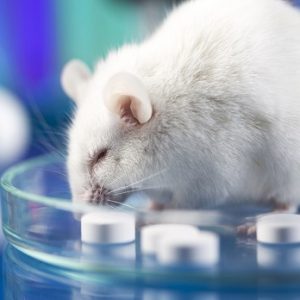
More evidence that low-calorie sweeteners are bad for your health
Studies show that artificial sweeteners can raise the risk of hypertension, metabolic syndrome, type 2 diabetes and heart disease, including stroke.

Science is supposed to make our life better.
It’s supposed to help us understand more about the world around us and many of us trust that the ‘scientific method’ has been so well thought-out that it cannot possibly mislead us.
But guess what? That’s not always the case and a new study into what might at first, seem a rather obscure topic – what lab rats eat – has threatened to blow apart much of what we know about toxicology.
Toxicology is the study to substances that may be harmful to human health and toxicity studies are most commonly conducted in rats. Setting aside the rights and wrongs of animal testing for the moment, many scientists still believe that studying effects on rodent health has a reasonable predictive value for how a substance might affect human health.
Who’d be a lab rat?
But there are unique problems with ‘lab rats’ which scientists have been wrestling with for years.
Firstly, they are very unhealthy to begin with.
Many things contribute to this.
Laboratory rats are sedentary and can develop all the same diseases that humans develop from being inactive. The daily stress of their environment also has an impact. Genetics also plays a part. The genetic manipulation used to produce strains of laboratory rats can leave them more vulnerable to disease than normal rats.
‘Spontaneous’ diseases
As a result, populations of laboratory rodents across the world develop high rates of so-called “spontaneous” diseases. For instance, after 2 years the average incidences of mammary fibroadenomas (non-cancerous tumours) and pituitary adenomas among certain kinds of Sprague Dawley rats can be up to 71 and 42% respectively.
When a scientist tests a toxic substance, for instance in the diet, he or she will generally divide a group of rodents into a control group, which eats a normal diet, and a test group, whose diet includes the toxic substance.
Interpreting the results of the study requires that we make some assumptions about the health and ‘normalcy’ of the ‘control group’.
Just a normal ‘toxic’ diet
But a new French study which looks at the toxicity of the ‘normal’ diet of the lab rat calls these assumptions into question.
The scientists tested 13 samples of proprietary feed. Most were contaminated with the herbicide glyphosate and its breakdown product AMPS. The researchers also found traces of the insecticides pirimiphos methyl, deltamethrin, chlorpyrifos methyl and ethyl, and malathion were also found in the rats’ food along with significant traces of heavy metals (mostly lead and cadmium) and PCBs.
The study found that the contamination levels recorded in the food were high enough to cause serious diseases and disrupt the hormonal and nervous systems of the animals in control groups.
What this means is that instead of comparing a clean, healthy diet with a contaminated diet, scientists are comparing a contaminated diet with an even more contaminated diet.
Masking toxic effects
Rat chow manufacturers like Purina don’t routinely test for these contaminants, and make no guarantees for the purity of their feeds in this regard. Yet these feeds are used every day, in laboratories around the world in feeding experiments.
No certification regarding the purity of test feed is required by journal editors or by food safety regulators either in the EU of the US – and this has been going on for decades.
The contamination of the ‘control diet’, which can make the rats sick, effectively masks the true toxic effect of the test diet – essentially making it seem less toxic than it actually is. This effect could be why we see so many studies showing ‘non-significant’ toxicity of some very highly toxic substances in animal trials.
Pay attention
The problem of contaminated laboratory diets are a serious regulatory issue since all of our safety regulations for toxic substances are based on the results of this kind of animal testing.
In effect it makes us all ‘lab rats’ and sheds some light on why it can be so hard to determine cause and effect when it comes to the multiple toxins we are routinely exposed to.
It is also an animal welfare issue, particularly if scientists know that they are routinely feeding contaminated food to their animals and they keep on doing it anyway.
The exposure of this problem, which many scientists admit is a long standing one, has not been particularly welcomed – but it is big news. And we should be paying attention.
Pat Thomas, Editor

Please subscribe me to your newsletter mailing list. I have read the
privacy statement